Forex Hourly Statistics for Major Currency Pairs
Contents
In theory, the hourly statistics of currency pairs should be pretty consistent in Forex. Some pairs should be traded more actively during the European session, some during the US trading session, and others during the Asian session. Of course, the conjunctions of the sessions should be even more active for some of the currency pairs.
Fortunately, the availability of the MQL coding language and the simple accessibility of H1 data for any currency pair in the MetaTrader 5 platform make it really easy to test the above assumptions. The script used in the present analysis gathered the High minus Low difference values and calculated the average for every hour of the day for the last five years (the default setting for the script), taking into account the DST (daylight saving time) shifts when necessary. It was applied to several major and cross currency pairs to find out the most active and the calmest hours of the day for them.
The results turned out to be in line with our expectations of the activity peak for most currency pairs during the time when both Europe and the USA are trading.
Hourly volatility statistics for major FX pairs
Below, you will find the statistics for the following 11 currency pairs: EUR/USD, GBP/USD, USD/JPY, USD/CAD, USD/CHF, AUD/USD, NZD/USD, EUR/GBP, AUD/JPY, EUR/JPY, GBP/JPY.
EUR/USD hourly statistics show the logical pattern — the first area of volatility coincides with the first few hours of the European trading session and then peaks when the US session opens with Europe still in game. The peak hours are colored the same way in all the presented statistics charts: the European session's beginning is red, the US one is green, and the three most active hours of the Asian sessions are light blue.
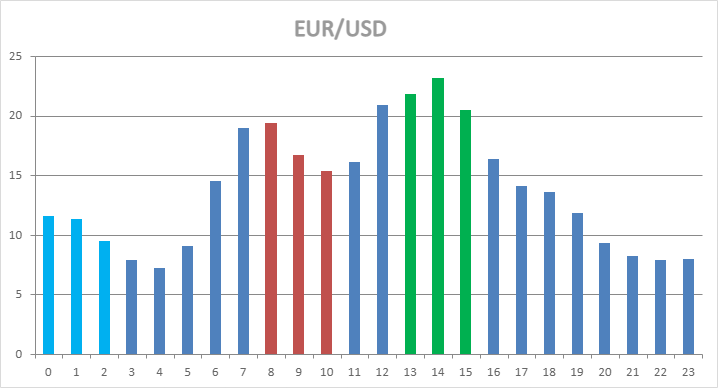
GBP/USD looks almost identical to EUR/USD, which makes sense considering both pairs are European. The only notable difference is the fact that the peak trading hour for GBP/USD is during the European session, while EUR/USD traders are more active during the American one.
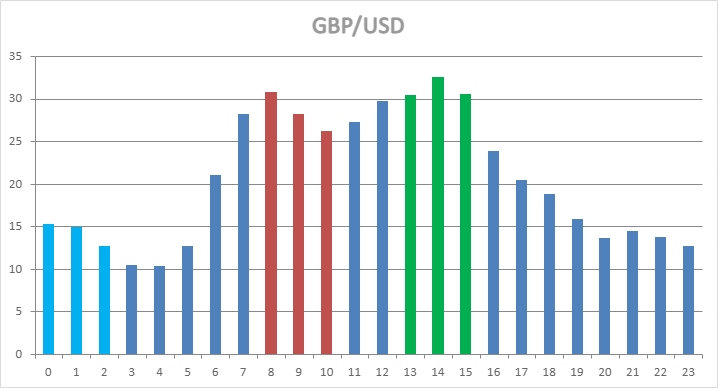
USD/JPY is more active during the Asian session hours than during the European one but peaks during the US session.
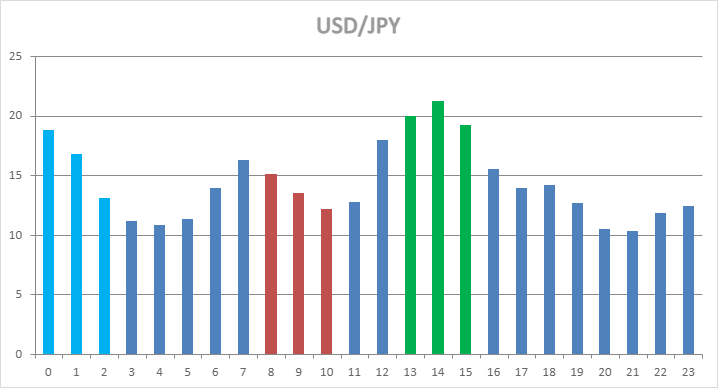
Unsurprisingly, USD/CAD shows a uniform peak during the US trading session and doesn't rise much during the European FX session open hours.
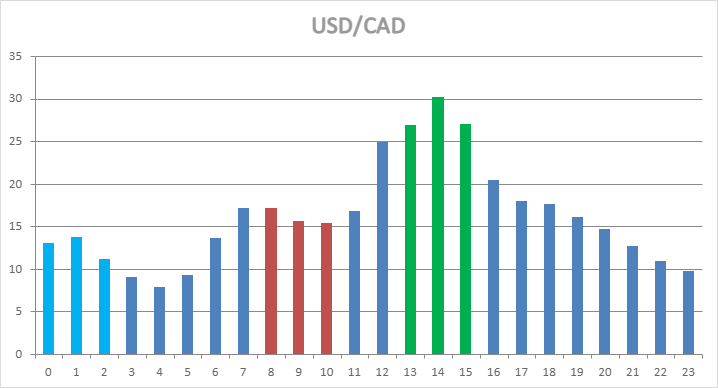
USD/CHF looks quite similar to EUR/USD, and there's nothing unexpected here — after all, Switzerland is very close to the eurozone, both economically and
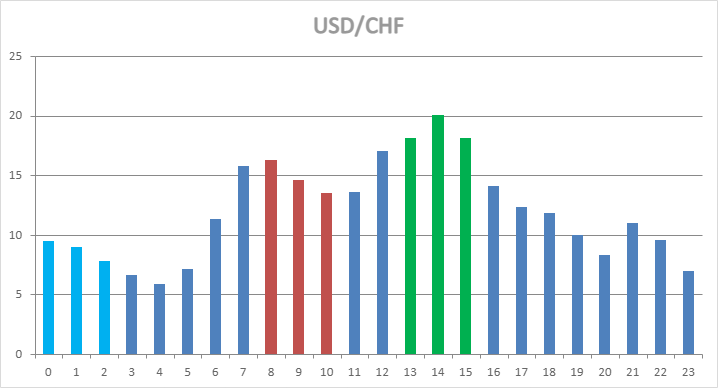
AUD/USD is active during the Asian and US trading sessions, while the European session demonstrates a smaller increase in activity.
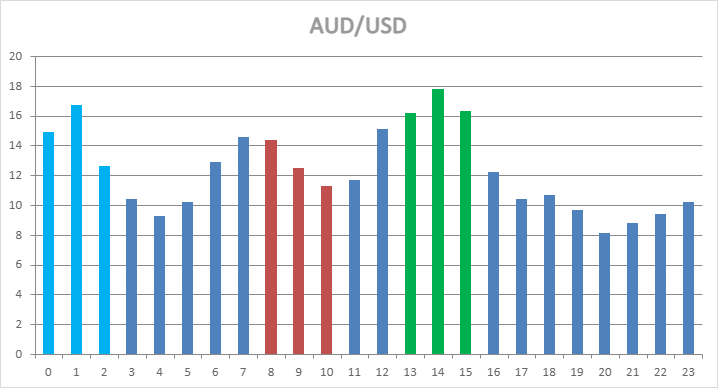
NZD/USD hourly volatility picture is almost a carbon copy of AUD/USD.
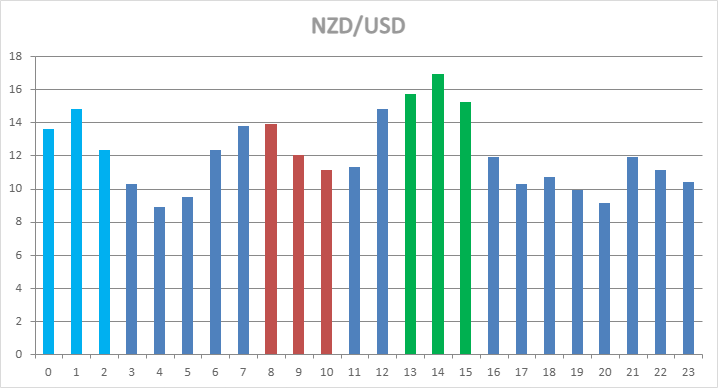
EUR/GBP is a purely European currency pair and this is easy to spot on the chart below. The first three hours of the European session are almost as busy as the first three hours of the US session. Which is a rare trait among FX pairs.
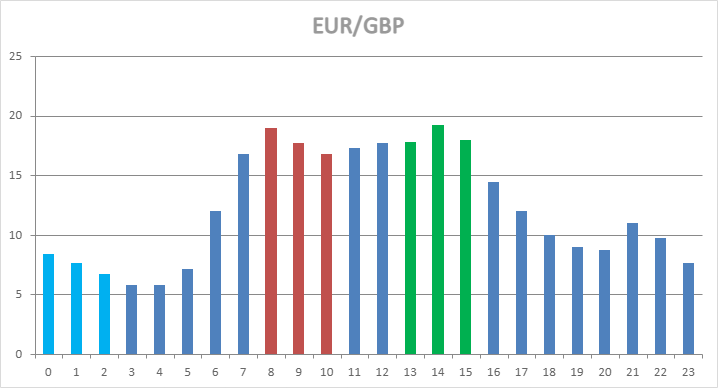
AUD/JPY is similar to USD/JPY, but the activity is somewhat higher during the Asian trading hours. This makes sense considering that both currencies are related to the Asia-Pacific region.
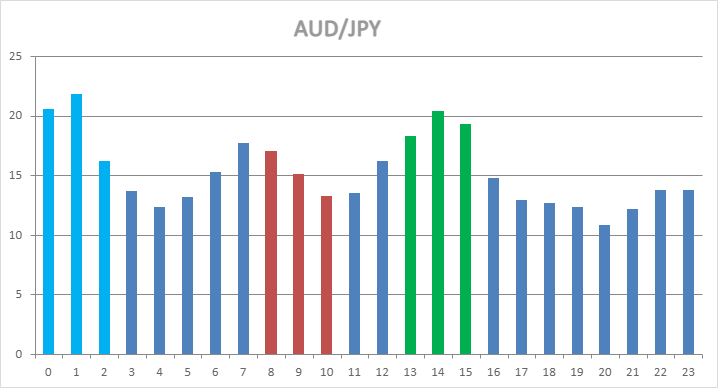
EUR/JPY isn't very different from the chart above but shows higher volatility during the European and US active session hours.
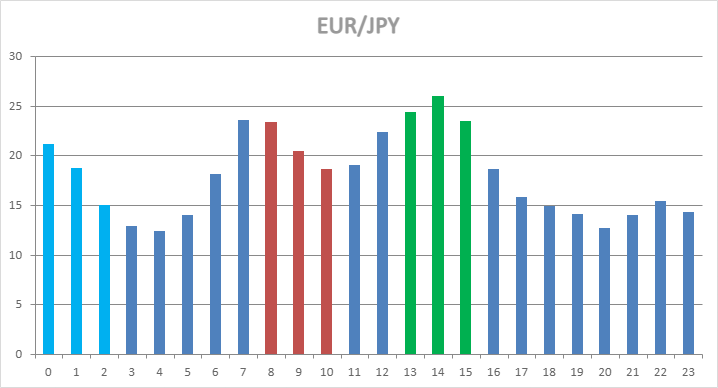
GBP/JPY looks almost identical to EUR/JPY and is provided just for the sake "completeness". Though the European session here is slightly stronger than with the EUR/JPY chart.
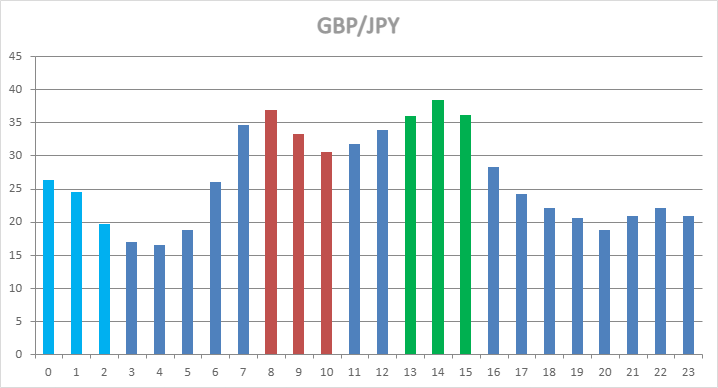
Using Forex hourly stats for currency pairs
But how can you use this data? That is a good question! Some of the uses that look promising at first glance are:
- Breakouts during pairs' still hours are more likely to end up as
fake-outs . - If you were to go scalping, it would make sense to choose the pair's most active hours for that.
- USD/CAD is really hot during the US trading session, which can and should be exploited.
Forex hourly statistics script
You too can easily get similar histogram charts for any other currency pair. Just follow these instructions:
- Download the HLStats script.
- Attach it to the H1 chart of the currency pair of your choice.
- As a result, you will get a file called stats.csv in the /MQL5/Files/ subfolder inside the data folder of your MetaTrader 5.
- Download the hourly statistics table for MS Excel.
- Copy the data from the file into the Pips column in the Excel table.
- The chart will redraw itself automatically.
If you want to share your opinion, observations, conclusions, or simply to ask questions regarding hourly Forex stats, feel free to join a discussion on our forum.
If you want to get news of the most recent updates to our guides or anything else related to Forex trading, you can subscribe to our monthly newsletter.